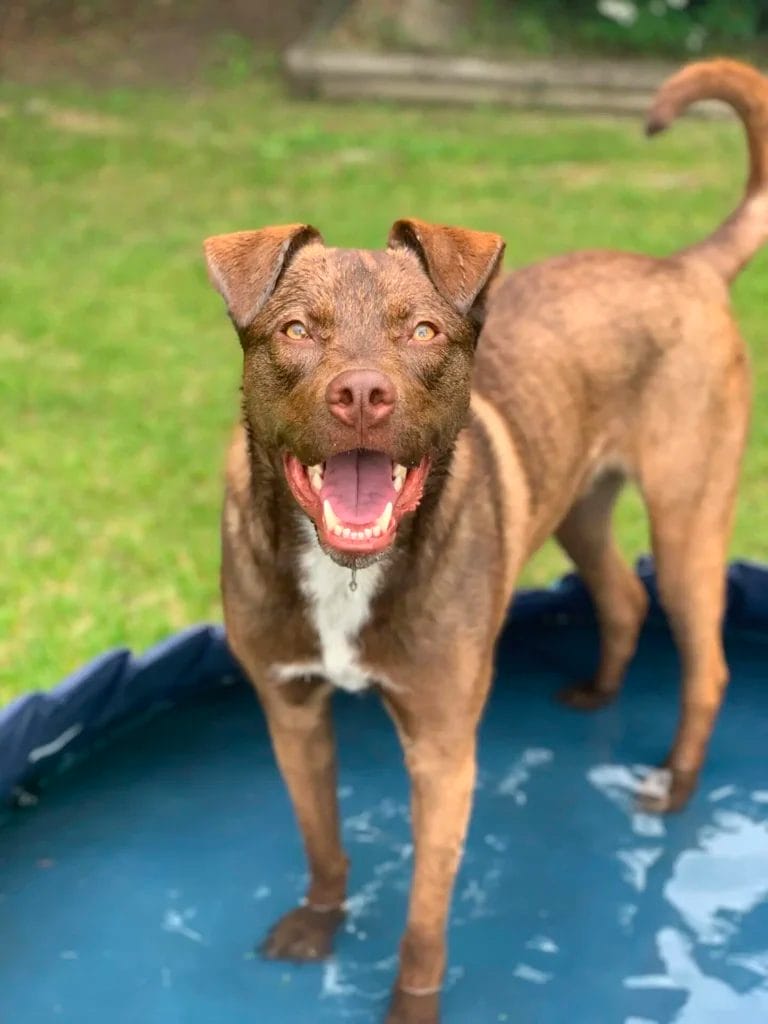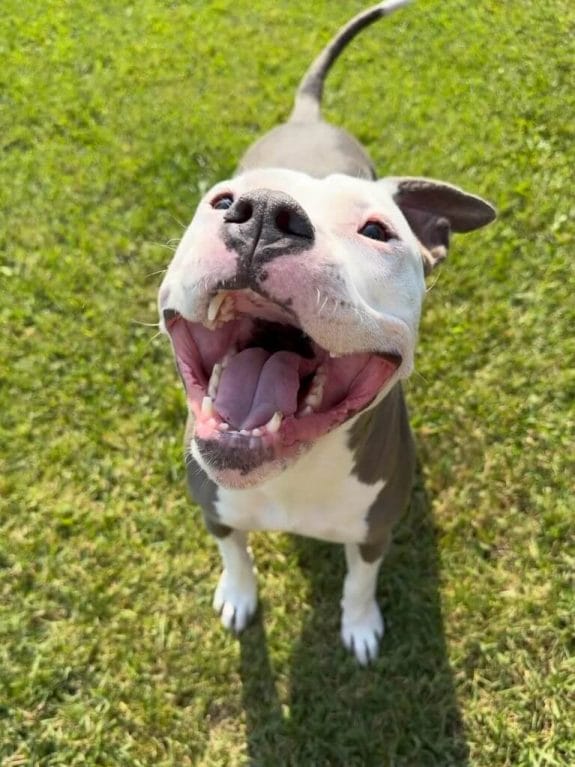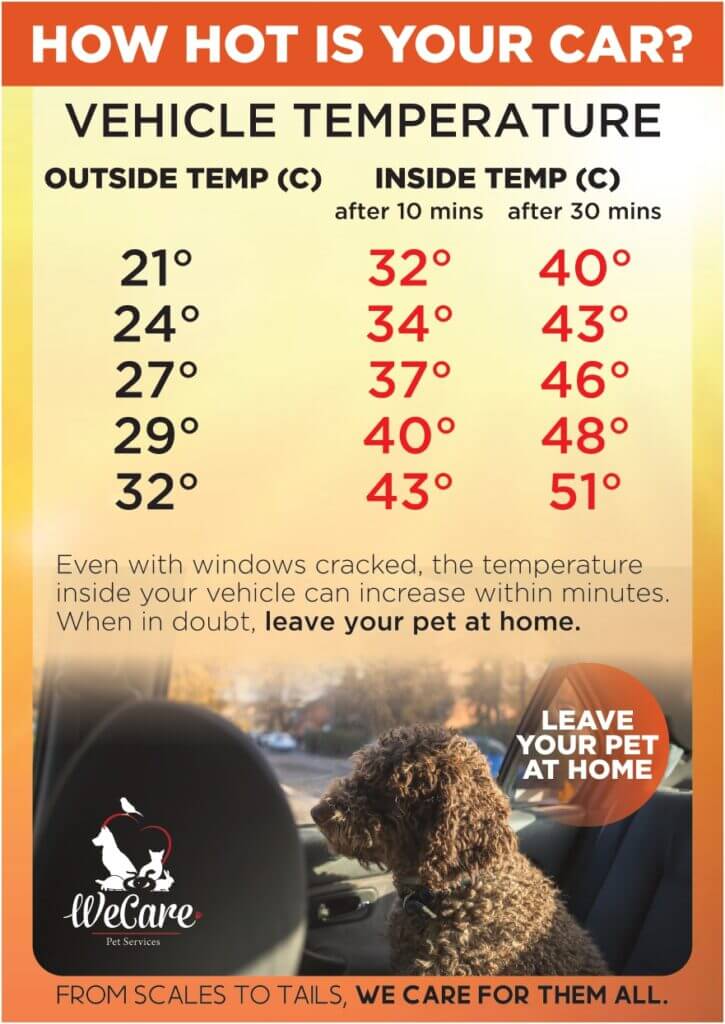
Summers in Fort McMurray can be quite hot – presenting unique challenges for pet owners. Dogs need special care to stay safe and healthy during the hotter months, as the excessive heat can be stressful, and frankly very dangerous. This guide provides comprehensive tips and strategies for keeping your furry friend cool and comfortable throughout the summer
Understanding Your Pet in the Heat
Dogs and cats can suffer from heat related illnesses such as heat stroke and dehydration. Unlike humans, pets cannot regulate their body temperature like we do, making them even more vulnerable during hot weather.
Dogs release heat through their tongue, nose and foot pads and pant to exchange cooler outside air with the warm humid air in their lungs. Cats don’t usually pant unless they are overwhelmed by the heat. If their body temperature becomes warmer than the outside air, and without prompt attention – they can develop Heat Stroke. This can result in brain damage, kidney failure, cardiac arrest, and even death. Older and overweight pets and some of the short-nosed breeds are at the greatest risk.
Key Considerations for Summer Dog Care
1. Ample Hydration!
- Always Provide Fresh Cool Water: Ensure your dog has access to clean, fresh cool water at all times. Water bowls sitting in the backyard baking in the heat will not be helpful in cooling your pooch down. When you are on walks or outings, carry a portable water bottle/bowl with you.
- Frozen treats: These can be a great way to provide extra hydration and cool your pet down in the summer. Store bought or homemade – both will work great on hot days! Try freezing safe fruits & vegetables in ice trays, or just offering ice!
2. Avoid Hot Surfaces & Protect those Paws!
- Test the Surface: If it’s too hot for the back of your hand – it’s too hot for your dog’s paws and can cause burns! Extremely overheated pads can actually leave behind paw prints as they sweat out their pads – so keep an eye out for this! Walk your dog on grass whenever possible. You can put a pet safe balm or coconut oil on their pads to help protect them from the hot surfaces.
3. Avoid the Mid-Day Heat!
- Morning and Evening Walks: Schedule walks during the cooler parts of the day, typically early morning or late evening wherever possible. If you have to head out for a walk mid-day, be sure to minimize the time you are out with short, frequent walks – just long enough to get their business done, then head back inside.
4. Never Leave Your Dog in a Parked Car
- Dangerous Temperatures: Even with windows cracked, temperatures inside a car can rise up to 20 degrees within 10 minutes, which can lead to heatstroke and death. Outside temperatures don’t have to be overly hot for a car to become dangerous to your pets. Please leave your dogs at home if you have to run out and do errands in the summertime!

5. Create Cool Spaces & Activities
- Shaded Areas: Ensure your dog has access to shaded areas if they’re spending time outside. Make sure that shade cast by backyard objects/trees will be available throughout the course of the day as the sun moves. Also note that a dog house, or small shelter is not a good source of shade for your pup – as those can quickly become ovens in the summer heat just like a hot car
- Cooling Mats and Fans: Use cooling mats, fans, or air conditioning to help lower your dog’s body temperature.
- Water Play: Set up a kiddie pool or sprinkler for your dog to play in.
- Indoor Games: Engage your dog with indoor activities to keep them active without the heat exposure.
6. Watch for Signs of Heatstroke
- Recognize Symptoms: excessive panting/gasping, rapid heartbeat, foaming around the mouth, inability to drink, dizziness, vomiting, bright red tongue and collapse.
What is happening: Heatstroke is a form of Hyperthermia where body temperatures increase above 103F. This occurs when the heat dissipating mechanisms in a pets body cannot compensate for external temperatures. Without prompt attention this can result in organ failure and death. - Immediate Action: Heat Stroke is a life threatening emergency that requires veterinary treatment. You need to remove your pet from the source of heat and prevent their internal body temperature from continuing to rise and transport them to vet as quickly as possible. It’s critical that you have contacted the veterinarian and set up an emergency appointment as none of the clinics in the Fort McMurray area are walk-in.
Here are some of the things you can do to lower your dogs body temperature safely:
- Move them to a cooler environment; indoors if possible with a cool fan. If not, a shady/grassy area will do.
- Wet your dog from the paws up with lukewarm or cool water (NOT COLD – as very cold water or ice can cause blood vessels to restrict flow and lead to Shock). Get the paws, belly, pits, and groin area wet. If your pet is placed in a tub or a pool – do not let the water rise higher than their belly. Immersing them up to the neck can cause temperatures to drop too fast result, resulting in hypothermia.
- Offer then small sips of cool water, or dribble water from an eyedropper or spray bottle to keep them hydrated until you can get your pet to the vet.
- If you have the ability to check your pets temperature with thermometer – anything above 104F is an absolute emergency and requires a veterinary visit.
7. Adjust Feeding Routines
- Lighter Meals: Offer lighter meals during the heat – as heavy meals can increase body temperature, and frozen treats are a great idea!
8. Grooming Tips
- Regular Brushing: helps remove excess dead fur and any mats which can trap moisture and irritate the skin
- Shaving: Shaving can expose your dogs skin to sunburn and their coat insulates them from the heat! Instead – opt for a trim!
Conclusion
Taking care of your dog in the summer heat requires a combination of hydration, careful exercise, and a keen eye for signs of distress. Understanding the signs of heat stress and taking proactive measures are essential to ensuring their well being all summer long.











